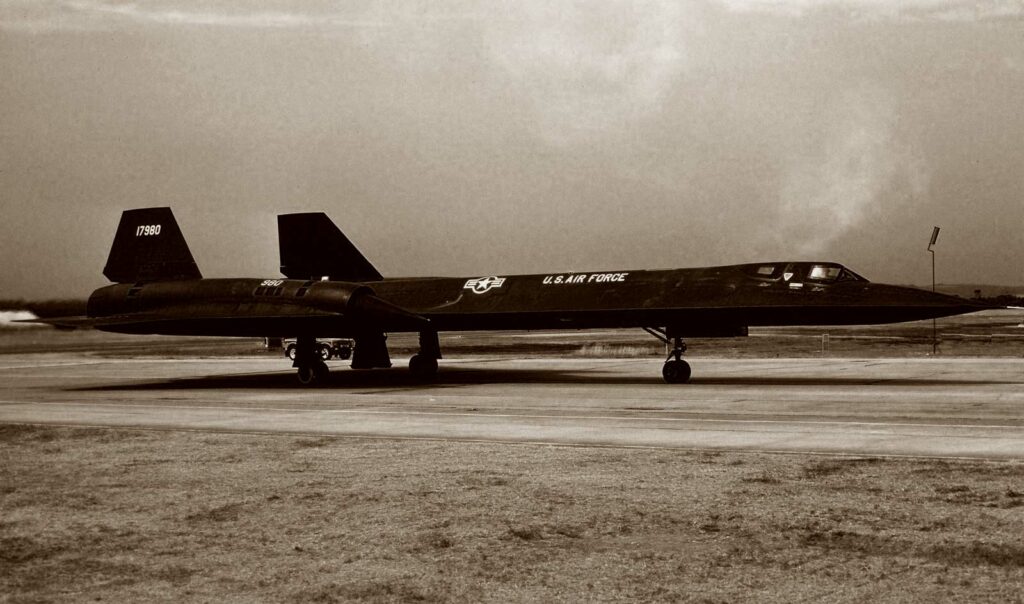The Lockheed YF-12: an advanced interceptor prototype, known for its Mach 3+ speeds, high-altitude capabilities, and pioneering use of stealth technology.
In Brief
The Lockheed YF-12 was an experimental interceptor aircraft, a derivative of the Lockheed A-12, and a precursor to the SR-71 Blackbird. Designed in the early 1960s, it was capable of speeds exceeding Mach 3 and could operate at altitudes above 80,000 feet. The YF-12 set numerous speed and altitude records and was equipped with advanced radar and air-to-air missiles for its intended role as a high-speed, high-altitude interceptor. Its innovative design featured titanium construction, sophisticated avionics, and stealth characteristics that reduced radar cross-section, making it one of the most advanced aircraft of its time.

History of the Development of the Lockheed YF-12
During the Cold War, the escalating need for effective air defense against Soviet bombers led the United States to pursue the development of a high-speed, high-altitude interceptor. The Lockheed YF-12 was developed from the A-12 reconnaissance aircraft, with the program officially starting in the late 1950s. The objective was to create an aircraft that could intercept and engage enemy bombers before they reached the U.S. mainland, utilizing unprecedented speeds and altitudes to outmatch any potential threats.
Lockheed’s Skunk Works, led by Clarence “Kelly” Johnson, undertook the project, adapting the A-12’s design to accommodate air-to-air missiles and advanced radar systems. The YF-12 first flew on August 7, 1963, showcasing its capabilities as a potential asset for the U.S. Air Force’s defense strategy. Although it never entered production, the YF-12 served as a critical step in the development of high-speed reconnaissance and interceptor aircraft.
Design of the Lockheed YF-12
The YF-12’s design was heavily influenced by its A-12 predecessor, featuring the same sleek, black airframe with a chined fuselage and canted vertical tail fins, which contributed to its reduced radar signature. The aircraft was constructed primarily from titanium and other heat-resistant materials, enabling it to withstand the extreme temperatures generated at Mach 3+ speeds.
Significant design modifications from the A-12 included the addition of a second cockpit for a crew member to operate the fire control radar and the incorporation of ventral fins for added stability at high speeds. The aircraft was equipped with the AN/ASG-18 fire-control radar, the first pulse-Doppler radar capable of Mach 3 flight, and could carry three AIM-47 Falcon missiles in an internal weapons bay, demonstrating a formidable long-range interception capability.
Performance of the Lockheed YF-12
The YF-12 was powered by two Pratt & Whitney J58 turbojet engines, enabling sustained speeds of over Mach 3.2 and altitudes of more than 80,000 feet. Its performance was extraordinary, with the capability to outrun nearly any adversary or missile, ensuring air superiority in its intended role as an interceptor. The aircraft’s range was significantly enhanced by aerial refueling, allowing it to patrol vast distances and maintain a high-speed presence over U.S. airspace.
The YF-12 set numerous world records for speed and altitude, some of which stood for decades. Its advanced avionics suite, coupled with the innovative use of materials and aerodynamic design, positioned it at the forefront of aerospace technology, showcasing what was possible in high-speed, high-altitude flight.
Variants of the Lockheed YF-12
The YF-12 program produced three prototypes, each contributing to the test and evaluation efforts. While these aircraft were fundamentally similar, each iteration provided valuable data that influenced future high-speed aircraft development, including the SR-71 Blackbird. The YF-12’s direct lineage to the SR-71 is evident in their shared design elements, with the SR-71 incorporating modifications for enhanced reconnaissance capabilities.
Military Use and Combat of the Lockheed YF-12
The YF-12 never saw combat or operational deployment as an interceptor. Its primary role was as a testbed for advanced technologies and concepts in high-speed, high-altitude flight. The data and experience gained from the YF-12 program were invaluable in the development of the SR-71 Blackbird, which utilized similar design principles for its reconnaissance missions. The YF-12 contributed significantly to the understanding of aerodynamics, propulsion, and stealth technologies at extreme speeds and altitudes.
The Lockheed YF-12 remains a remarkable testament to the ingenuity and innovation of Cold War-era aircraft design. As a technological marvel of its time, it pushed the boundaries of speed, altitude, and stealth, significantly influencing the development of future aircraft and defense strategies. Its legacy is reflected in the advancements it brought to aerospace engineering, particularly in the fields of high-speed flight and stealth technology, marking a pivotal chapter in the history of aviation.
Back to the Fighter Jet section.